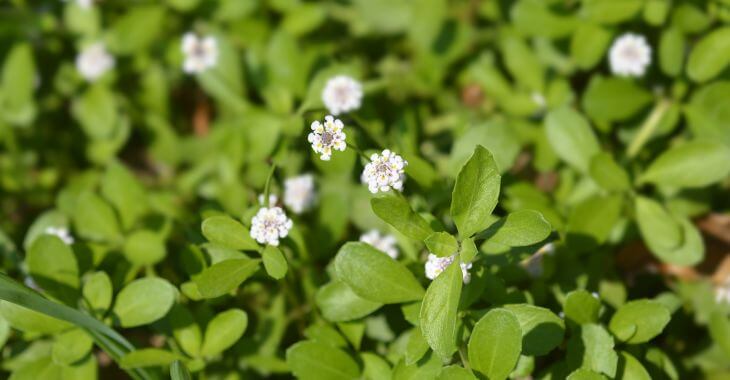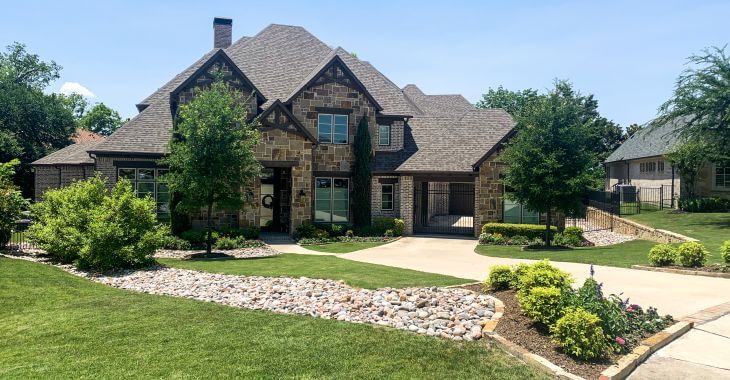Is Kurapia Ground Cover Right for Your Yard?

Turf grass is the most popular option for ground cover in residential yards, but it can be difficult to maintain. More and more homeowners are looking for alternatives to turf grass, and one of the latest trends is kurapia grass alternative. Is kurapia ground cover a good choice for your yard?
What Is Kurapia?
Kurapia is a native Japanese plant that has become very popular as a ground cover or a grass alternative. Also called turkey tangle or frog fruit, this plant resembles clover with small flowers. This ground cover is drought-tolerant, which makes it eco-friendly, but it can also handle wet conditions.
Kurapia ground cover has been spreading through dry areas that have difficulty maintaining lawns. California has many yards with kurapia, and many other regions are beginning to use this plant as a grass alternative. Some of the traits of kurapia include:
- Green leaves with small white and purple flowers
- Grows to up to three inches in height
- Each plant can spread to six feet in diameter
- Lippia nodiflora L. Kurapia or Phyla nodiflora is the proper name
- Prefers full sunlight but can tolerate partial shade
- Frost-intolerant, year-round growth requires 38-degree F or higher
- Can be planted as individual plants 18” apart
- Kurapia can be installed as sod
- It prefers sandy loam soil
- Minimal maintenance needed – mowing about once a month
- Great for erosion and weed control
Kurapia can grow year-round in warmer climates, but it can be used in colder regions. The plant will die back if temperatures drop below 38 degrees, but it can revive in the spring when warmer temperatures arrive. The best kurapia zones are 7a and higher, where winters are very mild.
How to Plant Kurapia Ground Cover
Kurapia is currently sold as plugs or sod – it is a sterile plant, so it does not have viable seeds. This means you will need to buy it from a nursey to plant on your own or have a distributer install or sell you the sod. The best time to plant is during the growing season of March to September.
Kurapia will do best when planted in sandy, well-draining soil. You will want to ensure it gets 7-8 hours of sunlight a day – it can handle partial shade but will not thrive like it will in sunlight. The plugs should be placed about one and a half feet apart if you choose this option.
Once you have plugs planted or kurapia sod installed, you will want to keep these young starts watered while they mature. While kurapia can survive drought, it needs water to grow quickly. If you keep the soil moist, you can have a thriving ground cover in just a few months.
During the first few months, you should be watering your new kurapia weekly. This will promote fast growth. Once mature, you can water bi-weekly, and no watering is needed during the dormant months. It is advised to have a good sprinkler system to provide even watering for your ground cover.
Benefits of Kurapia
Kurapia is a fast-growing, but non-invasive. This makes it ideal for ground cover in designated places. If you live in an area that has water restrictions, you can use this ground cover that requires much less water than turf grass and will retain a beautiful appearance. Other benefits include:
- Kurapia roots grow up to 5-10 feet deep, helping control erosion
- This ground cover is deer-resistant
- There are minimal pests or diseases that attack these plants
- Kurapia can choke out many weeds
- This ground cover can withstand moderate foot traffic once mature
- Great for hills and slopes
Kurapia problems are few and far between. This plant does not require extensive maintenance, making it simple to grow and groom. Compared to turf grass, you will water and mow less and it does not require the extensive weed control and fertilizing.
One of the only kurapia problems is availability. It was invented and created by a Japanese company, and you will not find it at most nurseries. You may need to buy it online and have it shipped to your home, although it is becoming more readily available in some common kurapia zones.

Are You Ready to Use Kurapia Grass Alternative?
If you live in a warmer climate and have direct sunlight in your yard, kurapia ground cover may be the perfect grass alternative for your yard. You can fore-go the heavy watering, mowing and other maintenance of turf grass and enjoy the benefits of this eco-friendly plant.
To learn more about kurapia and whether it is right for you yard, talk to your local landscaper. They can evaluate your yard and determine whether this plant may be a good choice to replace your lawn.
